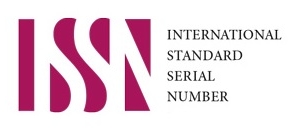Keywords cloud
10. Method of autonomous determination of the rocket’s reference attitude during pre-launch processing
Yangel Yuzhnoye State Design Office, Dnipro, Ukraine
Page: Kosm. teh. Raket. vooruž. 2024, (1); 85-92
DOI: https://doi.org/10.33136/stma2024.01.085
Language: Ukrainian
Key words: navigation system, mems-sensors, accelerometers, angular velocity sensors, reference attitude
- Meleshko V.V., Nesterenko O.I. Besplatformennye inertsialnye navigatsionnye systemy. Ucheb. posobie. Kirovograd: POLIMED – Service, 2011. 164 s.
- Vlasik S.N., Gerasimov S.V., Zhuravlyov A.A. Matematicheskaya model besplatformennoy inertsialnoy navigatsionnoy systemy i apparatury potrebitelya sputnikovoi navigatsionnoy systemy aeroballisticheskogo apparata. Nauka i technika Povitryannykh Sil Zbroinykh Sil Ukrainy. 2013. № 2(11). s. 166-169.
- Waldenmayer G.G. Protsedura pochatkovoi vystavki besplatformennoy inertsialnoy navigatsionoy systemy z vykorystannyam magnitometra ta rozshirennogo filtra Kalmana. Aeronavigatsini systemy. 2012. s. 8.
- Korolyov V.M., Luchuk Ye.V., Zaets Ya.G., Korolyova O.I., Miroshnichenko Yu.V. Analiz svitovykh tendentsiy rozvytku system navigatsii dlya sukhoputnykh viysk. Rozroblennya ta modernizatsia OVT. 2011. №1(4). s.19-29. https://doi.org/10.33577/2312-4458.4.2011.19-29
- Avrutov V.V., Ryzhkov L.M. Pro alternativniy metod avtonomnogo vyznachennya shyroty i dovgoty rukhomykh obiektiv. Mekhanika gyroskopichnykh system. 2021. №41. s. 122-131. https://doi.org/10.20535/0203-3771412021269255
- Bugayov D.V., Avrutov V.V., Nesterenko O.I. Experimentalne porivnyannya algoritmiv vyznachennya orientatsii na bazi complimentarnogo filtru ta filtru Madjvika. Avtomatizatsiya technologichnykh i biznes-protsesiv. 2020. T. 12, №3. s. 10-19.
- Chernyak M.G., Kolesnik V.O. Zmenshennya chasovykh pokhibok inertsialnogo vymiryuvalnogo modulya shlyakhom realizatsii yogo strukturnoi nadlyshkovosti na bazi tryvisnykh micromekhanichnykh vymiruvachiv. Mekhanika giroskopichnykh system. 2020. №39. s. 66-80. https://doi.org/10.20535/0203-3771392020229096
- Rudik A.V. Matematichna model pokhibok accelerometriv bezplatformenoi inertsialnoi navigatsinoi systemy. Visnyk Vynnitskogo politechnychnogo institutu. 2017. №2. s. 7-13.
- Naiko D.A., Shevchuk O.F. Teoriya iomovirnostey ta matematychna statistika: navch. posib. Vinnytsya: VNAU. 2020. 382 s.
- Matveev V.V., Raspopov V.Ya. Osnovy postroeniya bezplatformennykh inertsialnykh navigatsionnykh system. SPb.: GNTs RF OAO «Kontsern «TsNII «Electropribor». 2009. 280 s.
- Novatorskiy M.A. Algoritmy ta metody obchislen’ [Electronniy resurs]: navch. posib. dlya stud. KPI im. Igorya Sikorskogo. Kiyv: KPI im. Igorya Sikorskogo. 2019. 407 s.
Full text (PDF) || Content 2024 (1)
| Country | City | Downloads |
|---|---|---|
| USA | Ashburn; Ashburn; San Jose; San Francisco; Clearwater; Chicago; Los Angeles; Ashburn; Buffalo; Los Angeles; Phoenix; Phoenix; Phoenix; Phoenix; Phoenix; Phoenix; Phoenix; Phoenix; Phoenix; Phoenix; Phoenix; Phoenix; Phoenix; Phoenix; Phoenix; Phoenix; Phoenix; Phoenix; Phoenix; Phoenix; Phoenix; El Monte; Ashburn; Columbus; Ashburn; Ashburn; Ashburn; Quinton; Houston; Mountain View; Mountain View; Portland; Portland; San Mateo; Redmond;; Pompano Beach | 47 |
| Germany | Falkenstein; Düsseldorf;; Falkenstein; Leipzig; Leipzig | 6 |
| China | Pekin; Chizhou;; Shenzhen; Pekin | 5 |
| Singapore | Singapore; Singapore; Singapore; Singapore; Singapore | 5 |
| Ukraine | Uzhhorod; Zolochiv; Kremenchuk; Kremenchuk | 4 |
| Canada | Toronto; Toronto; Toronto | 3 |
| Unknown | ; Hong Kong | 2 |
| France | 1 | |
| Netherlands | Amsterdam | 1 |
| Cyprus | Limassol | 1 |
7. Selection of the functional units for the Cyclone-4M ILV separation system
Yangel Yuzhnoye State Design Office, Dnipro, Ukraine
Page: Kosm. teh. Raket. vooruž. 2024, (1); 61-71
DOI: https://doi.org/10.33136/stma2024.01.061
Language: Ukrainian
Key words: separation system, functional units of separation, «cold separation», «warm separation», pneumatic pusher, spring pusher, SPRE, gas-reactive nozzles, Zenit LV, Dnepr LV, Falcon 9 rocket, Cyclone-4М LV.
- Pankratov Yu. , Novikov A. V., Tatarevsky K. E., Azanov I. B. Dynamika perekhodnykh processov. 2014.
- Sinyukov A. M., Morozov N. I. Konstruktsia upravlyaemykh ballisticheskykh raket. 1969.
- Kabakova Zh. V., Kuda S. A., Logvinenko A. I., Khomyak V. A. Opyt razrabotki pneumosystemy dlya otdelenita golovnogo aerodynamicheskogo obtekatelya. Kosmicheskaya technika. Raketnoe vooruzhenie. 2017. Vyp. 2 (114).
- Kolesnikov K. S., Kozlov V. V., Kokushkin V. V. Dynamika razdeleniya stupeney letatelnykh apparatov. 1977.
- Antares – Spaceflight Insider: web site. URL: https://www. Spaceflightinsider.com/missions/iss/ng-18-cygnus-cargo-ship-to-launch-new-science-to-iss/Antares (data zvernennya 30.10.2023).
- Falcon 9 – pexels: website. URL: https://www. pexels.com/Falcon 9 (data zvernennya 31.10.2023).
- Kolesnikov K. , Kokushkin V. V., Borzykh S. V., Pankova N. V. Raschet i proektirovanie system razdeleniya stupeney raket. 2006.
- Cyclone-4M – website URL: https://www.yuzhnote.com (data zvernennya 31.10.2023)
- Logvinenko A. Sozdanie gasoreaktivnykh system otdeleniya i uvoda otrabotavshykh stupeney – noviy shag v RKT. Kosmicheskaya tekhnika. Raketnoe vooruzhenie, KBU, NKAU, vyp. 1, 2001.
- Logvinenko A. I., Porubaimekh V. I., Duplischeva O. M. Sovremennye metody ispytaniy system i elementov konstruktsiy letatelnykh apparatov. Monografia. Dnepr, KBU, 2018.
Full text (PDF) || Content 2024 (1)
| Country | City | Downloads |
|---|---|---|
| USA | Ashburn; San Jose; Chicago; Chicago; Los Angeles; Washington; Buffalo; Dublin; Buffalo; Ashburn; Phoenix; Phoenix; Phoenix; Phoenix; Phoenix; Phoenix; Phoenix; Phoenix; Phoenix; Phoenix; Phoenix; Phoenix; San Francisco; Los Angeles; El Monte; El Monte; Seattle; Ashburn; Ashburn; Ashburn; Mountain View; Mountain View; Portland; Portland; San Mateo; San Mateo; Ashburn; Ashburn; Ashburn; Pompano Beach; Mountain View | 41 |
| China | Xining; Pekin; Hefei;; Xiamen; Pekin; Hangzhou; Shenzhen; Yiwu; Pekin;; Wuhan | 12 |
| Germany | Falkenstein; Düsseldorf; Falkenstein; Leipzig; Leipzig | 5 |
| Canada | Toronto; Toronto; Toronto; Toronto | 4 |
| Singapore | Singapore; Singapore; Singapore | 3 |
| Ukraine | Berdyans'k; Kremenchuk; Novomoskovsk | 3 |
| France | ; Paris | 2 |
| The Republic of Korea | ; Seoul | 2 |
| India | Mumbai | 1 |
| Unknown | 1 | |
| Netherlands | Amsterdam | 1 |
9. Gas-dynamic simulation of the supersonic stream in the pulsed wind tunnel
Yangel Yuzhnoye State Design Office, Dnipro, Ukraine
Page: Kosm. teh. Raket. vooruž. 2019, (2); 63-70
DOI: https://doi.org/10.33136/stma2019.02.063
Language: Russian
Key words: incident flow modeling, velocity fields in the wind tunnel working section, aerodynamic experiment
Full text (PDF) || Content 2019 (2)
| Country | City | Downloads |
|---|---|---|
| USA | San Jose; Matawan; Baltimore; Plano; Dublin; Dublin; Columbus; Phoenix; Phoenix; Phoenix; Phoenix; Phoenix; Phoenix; Phoenix; Phoenix; Phoenix; Phoenix; Phoenix; Phoenix; Phoenix; Phoenix; Monroe; El Monte; Ashburn; Columbus; Ashburn; Ashburn; Ashburn; Ashburn; Quinton; Seattle; Seattle; Tappahannock; Portland; Portland; San Mateo; San Mateo; San Mateo; San Mateo; Des Moines; Des Moines; Boardman; Ashburn; Boardman; Ashburn; Ashburn; Ashburn; Pompano Beach; West Palm Beach; Seattle; Seattle | 51 |
| Singapore | Singapore; Singapore; Singapore; Singapore; Singapore; Singapore; Singapore; Singapore; Singapore; Singapore; Singapore | 11 |
| Canada | Toronto; Toronto; Toronto; Toronto; Toronto; Toronto; Monreale | 7 |
| Great Britain | London; London; Ipswich | 3 |
| Unknown | Padstow; | 2 |
| China | Pekin; Pekin | 2 |
| France | Paris; Paris | 2 |
| Germany | Limburg an der Lahn; Falkenstein | 2 |
| Netherlands | Amsterdam; Amsterdam | 2 |
| Indonesia | Jakarta | 1 |
| Finland | Helsinki | 1 |
| South Africa | Johannesburg | 1 |
| Iran | 1 | |
| Romania | Voluntari | 1 |
| Ukraine | Dnipro | 1 |
7. Mechanics of a satellite cluster. Methods for estimating the probability of their maximal approach in flight
Yangel Yuzhnoye State Design Office, Dnipro, Ukraine
Page: Kosm. teh. Raket. vooruž. 2020, (1); 76-84
DOI: https://doi.org/10.33136/stma2020.01.076
Language: Russian
Key words: method of launch time planning, safety of flight through space debris cluster
Full text (PDF) || Content 2020 (1)
| Country | City | Downloads |
|---|---|---|
| USA | Boardman; Mountain View; Matawan; Baltimore; North Bergen; Plano; Dublin; Phoenix; Phoenix; Phoenix; Phoenix; Phoenix; Phoenix; Phoenix; Phoenix; Phoenix; Phoenix; Phoenix; Phoenix; Phoenix; Phoenix; Monroe; El Monte; Ashburn; Seattle; Seattle; Ashburn; Ashburn; Ashburn; Seattle; Mountain View; Mountain View; Seattle; Tappahannock; Portland; Portland; San Mateo; San Mateo; San Mateo; San Mateo; San Mateo; Ashburn; Ashburn; Ashburn; Ashburn; Ashburn; Ashburn; Des Moines; Boardman; Boardman; Ashburn; Ashburn; Pompano Beach | 53 |
| Singapore | Singapore; Singapore; Singapore; Singapore; Singapore; Singapore; Singapore; Singapore | 8 |
| Canada | Toronto; Toronto; Monreale | 3 |
| Belgium | Brussels; Brussels | 2 |
| Unknown | Canberra; | 2 |
| Germany | Karlsruhe; Falkenstein | 2 |
| France | Paris; Paris | 2 |
| Netherlands | Amsterdam; Amsterdam | 2 |
| Finland | Helsinki | 1 |
| Romania | Voluntari | 1 |
| Ukraine | Dnipro | 1 |
21. Ensuring Aiming Accuracy of Ship’s Telemetry Reception Antenna Installation for Small Vessels
Yangel Yuzhnoye State Design Office, Dnipro, Ukraine
Page: Kosm. teh. Raket. vooruž. 2018 (2); 178-183
DOI: https://doi.org/10.33136/stma2018.02.178
Language: Russian
Key words: antenna, guidance algorithm, ship roll, ship drift, simulation
Full text (PDF) || Content 2018 (2)
| Country | City | Downloads |
|---|---|---|
| USA | Boardman; Ashburn; Matawan; Los Angeles; Baltimore; North Bergen; Plano; Ashburn; Ashburn; Phoenix; Phoenix; Phoenix; Phoenix; Phoenix; Phoenix; Phoenix; Phoenix; Phoenix; Phoenix; Phoenix; Phoenix; Los Angeles; Monroe; El Monte; Ashburn; Seattle; Seattle; Seattle; Columbus; Ashburn; Ashburn; Houston; Boardman; Seattle; Tappahannock; Portland; Portland; Portland; San Mateo; San Mateo; San Mateo; San Mateo; San Mateo; San Mateo; San Mateo; Ashburn; Des Moines; Boardman; Boardman; Ashburn; Ashburn; Ashburn; Pompano Beach | 53 |
| Singapore | Singapore; Singapore; Singapore; Singapore; Singapore; Singapore; Singapore | 7 |
| Canada | Toronto; Toronto; Toronto; Monreale | 4 |
| Unknown | Melbourne; | 2 |
| Netherlands | Amsterdam; Amsterdam | 2 |
| Finland | Helsinki | 1 |
| India | Jaipur | 1 |
| Germany | Falkenstein | 1 |
| Romania | Voluntari | 1 |
| Ukraine | Dnipro | 1 |
7. Theoretical Models of Sound Speed Increase Effects in Gas Duct with Corrugated Wall
Yangel Yuzhnoye State Design Office, Dnipro, Ukraine1; National Technical University “Kharkiv Polytechnic Institute”, Kharkiv, Ukraine2
Page: Kosm. teh. Raket. vooruž. 2018 (2); 57-67
DOI: https://doi.org/10.33136/stma2018.02.057
Language: Russian
Key words: rocket engine automatic units, pneumatic test bench, metal hose, corrugated shell, toroidal vortex, longitudinal-lateral oscillations
Full text (PDF) || Content 2018 (2)
| Country | City | Downloads |
|---|---|---|
| USA | Boardman; Ashburn; Ashburn; Ashburn; Matawan; Los Angeles; Plano; Columbus; Ashburn; Phoenix; Phoenix; Phoenix; Phoenix; Phoenix; Phoenix; Phoenix; Phoenix; Phoenix; Phoenix; Phoenix; Phoenix; Phoenix; Phoenix; Los Angeles; Monroe; El Monte; Ashburn; Seattle; Seattle; Seattle; Ashburn; Ashburn; Houston; Ashburn; Mountain View; Mountain View; Seattle; Tappahannock; Portland; San Mateo; San Mateo; Ashburn; Des Moines; Boardman; Boardman; Ashburn; Ashburn; Ashburn; Pompano Beach; Seattle | 50 |
| Singapore | Singapore; Singapore; Singapore; Singapore; Singapore; Singapore | 6 |
| Canada | Toronto; Toronto; Toronto; Toronto; Monreale | 5 |
| Ukraine | Dnipro; Dnipro | 2 |
| Netherlands | Amsterdam; Amsterdam | 2 |
| Unknown | Brisbane | 1 |
| Finland | Helsinki | 1 |
| France | Paris | 1 |
| Germany | Falkenstein | 1 |
| Romania | Voluntari | 1 |
| Uzbekistan | Tashkent | 1 |
6. On Building of Inertial Navigation System in the Condition of Presence of Considerable g-Load and Angular Velocity in Preferential Direction
Yangel Yuzhnoye State Design Office, Dnipro, Ukraine
Page: Kosm. teh. Raket. vooruž. 2018 (1); 31-38
DOI: https://doi.org/10.33136/stma2018.01.031
Language: Russian
Key words:
Full text (PDF) || Content 2018 (1)
| Country | City | Downloads |
|---|---|---|
| USA | Ashburn; Matawan; Los Angeles; Baltimore;;; Plano; Miami; Dublin; Phoenix; Phoenix; Phoenix; Phoenix; Phoenix; Phoenix; Phoenix; Phoenix; Phoenix; Phoenix; Phoenix; Phoenix; Phoenix; Phoenix; Phoenix; Monroe; El Monte; El Monte; Ashburn; Seattle; Seattle; Ashburn; Ashburn; Seattle; Houston; Ashburn; Seattle; Tappahannock; Portland; Portland; San Mateo; San Mateo; San Mateo; San Mateo; Ashburn; Des Moines; Boardman; Boardman; Ashburn; Ashburn; Ashburn; Pompano Beach; Seattle | 52 |
| Singapore | Singapore; Singapore; Singapore; Singapore; Singapore; Singapore; Singapore; Singapore; Singapore; Singapore; Singapore; Singapore; Singapore; Singapore; Singapore | 15 |
| Canada | Toronto; Toronto; Toronto; Toronto; Monreale | 5 |
| Netherlands | Amsterdam; Amsterdam | 2 |
| Philippines | 1 | |
| China | Pekin | 1 |
| Finland | Helsinki | 1 |
| Pakistan | 1 | |
| Great Britain | London | 1 |
| France | 1 | |
| Germany | Falkenstein | 1 |
| Romania | Voluntari | 1 |
| Ukraine | Dnipro | 1 |
21. Mass Parameter Optimization of Thermal Protective Structure for Reusable Spacecraft
Yangel Yuzhnoye State Design Office, Dnipro, Ukraine1; Oles Honchar Dnipro National University, Dnipro, Ukraine2
Page: Kosm. teh. Raket. vooruž. 2017 (2); 121-126
Language: Russian
Key words:
Full text (PDF) || Content 2017 (2)
| Country | City | Downloads |
|---|---|---|
| USA | Boardman; Matawan; Dublin; Columbus; Columbus; Ashburn; Phoenix; Phoenix; Phoenix; Phoenix; Phoenix; Phoenix; Phoenix; Phoenix; Phoenix; Phoenix; Phoenix; Phoenix; Phoenix; Phoenix; Phoenix; Monroe; El Monte; El Monte; Ashburn; Ashburn; Ashburn; Seattle; Ashburn; Ashburn; North Charleston; Mountain View; Tappahannock; San Antonio; San Mateo; San Mateo; San Mateo; San Mateo; San Mateo; Des Moines; Boardman; Boardman; Ashburn; Ashburn; Ashburn; Ashburn; Ashburn; Boardman; Ashburn; Pompano Beach | 50 |
| Singapore | Singapore; Singapore; Singapore; Singapore; Singapore; Singapore; Singapore; Singapore; Singapore; Singapore | 10 |
| Canada | Toronto; Toronto; Toronto; Toronto; Toronto; Monreale | 6 |
| Ukraine | Dnipro; Kyiv; Dnipro | 3 |
| Netherlands | Amsterdam; Amsterdam | 2 |
| Unknown | Sidney | 1 |
| Finland | Helsinki | 1 |
| Germany | Falkenstein | 1 |
| Romania | Voluntari | 1 |
2. Flying Vehicle Maneuvering Dynamics in Atmosphere with Weight Asymmetry and Elements of Terminal Control in Turn Leg
Yangel Yuzhnoye State Design Office, Dnipro, Ukraine
Page: Kosm. teh. Raket. vooruž. 2019, (1); 4-14
DOI: https://doi.org/10.33136/stma2019.01.004
Language: Russian
Key words: angular motion, angles of precession, nutation (attack), proper rotation, spread of technical characteristics of the aircraft
1. Lebedev A. A., Gerasuta N. F. Ballistika raket. M.: Mashinostroenie, 1970. 244 p.
2. Buchgolz N. N. Osnovnoy kurs teoreticheskoi mechaniki. Ch. 2. M.: Nauka, 1972. 332 p.
3. Aslanov V. S. Prostranstvennoe dvizhenie tela pri spuske v atmosfere. M.: Fizmatlit, 2004. 160 p.
4. Gukov V. V., Kirilinko P. P., Mareev Y. A., Samarskiy A. M., Chernov V. V. Osnovy teorii poleta letatelnykh apparatov. M.: MAI, 1978. 70 p.
5.Teoretychni osnovy poletu kosmichnykh apparativ. Ministerstvo oborony Ukrainy, 2000. 180 p.
Full text (PDF) || Content 2019 (1)
| Country | City | Downloads |
|---|---|---|
| USA | Boardman; Ashburn; Ashburn; Matawan; Baltimore; Plano; Ashburn; Columbus; Columbus; Phoenix; Phoenix; Phoenix; Phoenix; Phoenix; Phoenix; Phoenix; Phoenix; Phoenix; Phoenix; Phoenix; Phoenix; Monroe; El Monte; Ashburn; Seattle; Ashburn; Houston; Ashburn; Mountain View; Ashburn; Mountain View; Mountain View; Mountain View; Seattle; Tappahannock; Boydton; Boydton; Portland; Portland; San Mateo; San Mateo; San Mateo; San Mateo; San Mateo; San Mateo; Boydton; Boydton; Boydton; Boydton; Boydton; Boydton; Des Moines; Boardman; Boardman; Ashburn; Ashburn; Pompano Beach; Seattle | 58 |
| Singapore | Singapore; Singapore; Singapore; Singapore; Singapore; Singapore; Singapore; Singapore; Singapore; Singapore; Singapore; Singapore | 12 |
| Canada | Toronto; Toronto; Toronto; Monreale | 4 |
| Netherlands | Amsterdam; Amsterdam | 2 |
| China | Shanghai | 1 |
| Belgium | Brussels | 1 |
| Finland | Helsinki | 1 |
| Unknown | 1 | |
| The Republic of Korea | Seoul | 1 |
| Germany | Falkenstein | 1 |
| Romania | Voluntari | 1 |
| Ukraine | Dnipro | 1 |
22. Calculation of Uncertainty of Represented Values of Linear Accelerations during Centrifugal Machines Certification
Yangel Yuzhnoye State Design Office, Dnipro, Ukraine
Page: Kosm. teh. Raket. vooruž. 2019, (1); 149-153
DOI: https://doi.org/10.33136/stma2019.01.149
Language: Russian
Key words: extended uncertainty, standard uncertainty, sensitivity coefficient, measurement uncertainty contribution, frequency meter
Full text (PDF) || Content 2019 (1)
| Country | City | Downloads |
|---|---|---|
| USA | Boardman; Ashburn; Baltimore;; Los Angeles; Plano; Ashburn; Columbus; Ashburn; Ashburn; Phoenix; Phoenix; Phoenix; Phoenix; Phoenix; Phoenix; Phoenix; Phoenix; Phoenix; Phoenix; Phoenix; Phoenix; Phoenix; Monroe; El Monte; Seattle; Seattle; Columbus; Ashburn; Mountain View; Seattle; Seattle; Tappahannock; Portland; Portland; San Mateo; San Mateo; Ashburn; Des Moines; Boardman; Boardman; Ashburn; Ashburn; Ashburn; Boardman; Ashburn; Pompano Beach | 47 |
| Singapore | Singapore; Singapore; Singapore; Singapore; Singapore; Singapore; Singapore | 7 |
| Canada | Toronto; Toronto; Toronto; Toronto | 4 |
| Belgium | Brussels; Brussels | 2 |
| Netherlands | Amsterdam; Amsterdam | 2 |
| Philippines | Olongapo City | 1 |
| Unknown | Perth | 1 |
| France | Paris | 1 |
| Germany | Falkenstein | 1 |
| Romania | Voluntari | 1 |
| Ukraine | Dnipro | 1 |


